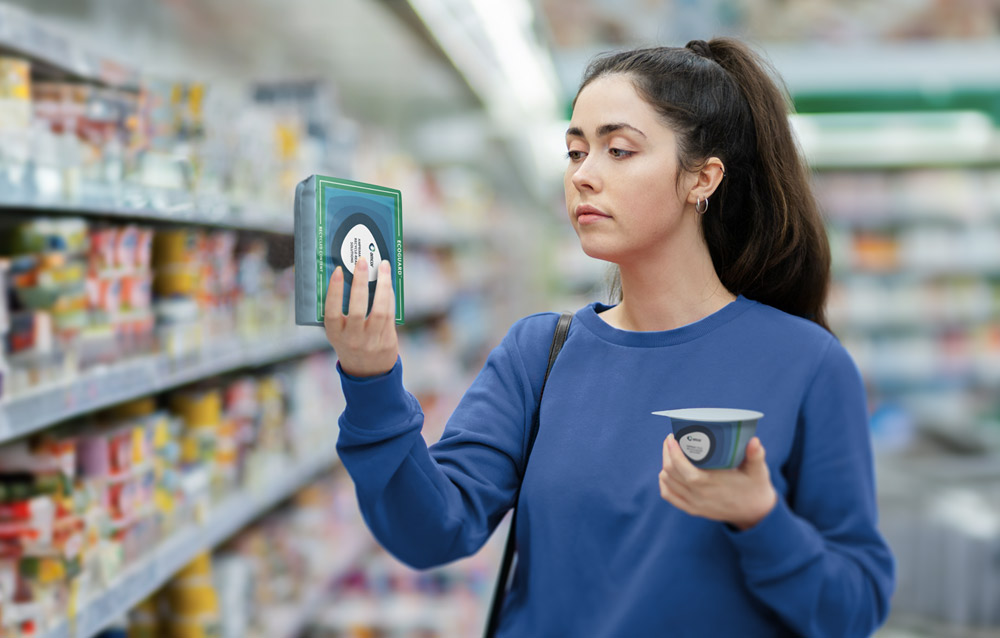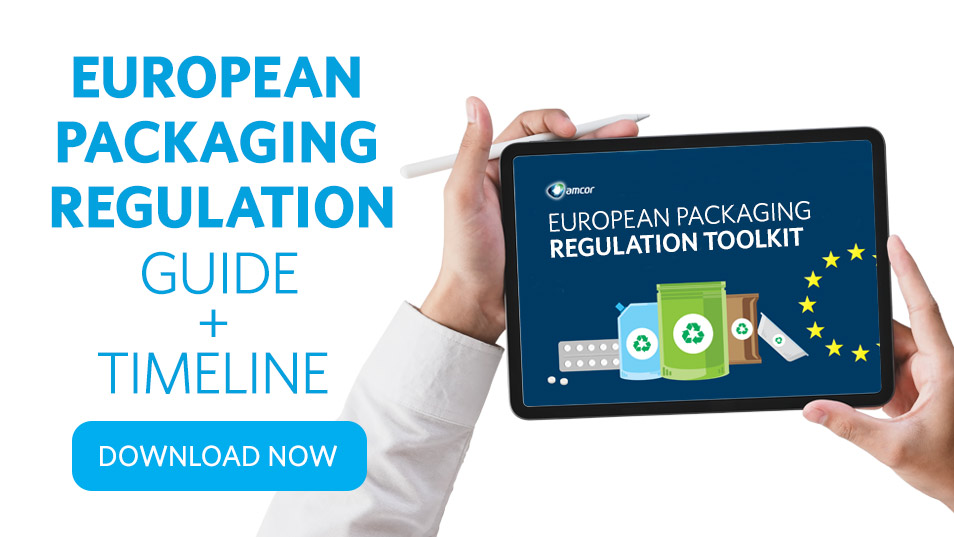Understanding the EU Green Claims Directive: Implications for Brands and Retailers
Sustainability
November 13, 2023Reading time: 4 minutes
Soon, every sustainability claim you make around your product in the European Union will need to adhere to the Green Claims Directive. So, what do you need to know to prepare?
Soon, every sustainability claim you make around your product in the European Union will need to adhere to the Green Claims Directive. So, what do you need to know to prepare?

Background of the Directive
In March 2023, the European Commission set out its Proposal for a Directive on Green Claims in response to growing concern over the hundreds of misleading environmental claims, often termed "greenwashing," that have flooded the European market. With sustainability now a major factor in consumer purchasing decisions, many companies have been eager to showcase their green credentials, but without a standardized framework these claims have varied in accuracy and transparency, leading to confusion among consumers and stakeholders.
Amcor's 2023 consumer claims research backs up these findings, revealing that nearly 80% of consumers struggle to understand the meaning behind most sustainability logos. Our research highlights the need for the Directive's objective to set clear guidelines for environmental marketing.
What do brands and retailers need to know?
Vague claims like “eco-friendly packaging” or “better for the planet” or “ocean-friendly” will disappear. The Directive will set out a clear set of rules for how companies substantiate, communicate and verify environmental claims to consumers. It mandates greater transparency, ensuring that any environmental claims made are backed by verifiable data, preventing misleading or exaggerated statements.
This means that you’ll need to undertake a thorough review - and potentially an overhaul of - your environmental claims and marketing processes. When communicating through claims, all of your labels will have to be based on robust data that demonstrates that the environmental performance is significant from a life cycle perspective. Misleading or unsubstantiated claims could lead to civil and criminal liability resulting in lost revenue and reputational damage.
Retailers, particularly those with private labels or significant influence over packaging requirements, will need to ensure that their products align with the new rules. This could involve revisiting supplier agreements or re-evaluating packaging choices.
It’s important to also prepare for evolving consumer expectations. As consumers become more informed, they will demand greater authenticity and accountability. This will be especially important in the case of comparative environmental claims, which are used to convey that one product has a better performance than another from a circularity point of view.
The Directive, in essence, will provide a framework for brands to maintain consumer trust. While the final rules have yet to be confirmed, the legislation is expected to be decided by late 2024 and to come into force by 2026, at the earliest.
Key considerations for brands
1. Compliance and verification
Adhering to the Green Claims Directive will require a rigorous verification process. You will need to invest in assessing and validating their claims through life cycle assessments, third-party certifications, and other methods, such as product environmental footprints.
2. Communication and labeling
Transparent communication is vital. The Directive requires clear and accessible information on packaging, demanding an overhaul of labeling practices to convey authentic and verified environmental information. This communication will be carried out mainly through labels or a scoring system (similar to EU energy efficiency scores on household appliances) that would be developed in the European Union. Under the new rules, national or regional environmental labeling schemes are likely to slowly become obsolete, as they will be increasingly replaced by EU ones.

3. Innovation and adaptation
Embracing sustainability is not just about compliance; it’s about innovation. The proposed Directive pushes companies to explore new materials, designs, and technologies that align with environmental objectives, creating a culture of continuous improvement. This presents unique opportunities for you to showcase “best in class” approaches to driving innovation towards more sustainable products.
A piece in the wider regulatory puzzle
This latest legislative development is one of several regulatory measures aimed at promoting a more sustainable and transparent European market for decades to come. So where does it fit within the broader regulatory context?
At the center is the empowering consumers for the green transition Directive, which underscores the EU's commitment to ensuring that consumers have the knowledge and tools to make informed choices. Then, specifically for packaging, is the EU Packaging and Packaging Waste Regulation (PPWR) which is on its way to set mandatory rules on packaging design, waste reduction, and increasing reuse and recycling.
How can Amcor help you keep up?
Our Sustainability Team monitors existing and upcoming regulations. You can download our latest regulatory toolkit here, which includes a 5-page guide and timeline summarizing the key changes planned with the PPWR, eco-modulated EPR and plastic taxes.
We can help you get ready to meet the new legislation. Five years ago, we made a pledge to develop all our packaging to be recyclable or reusable by 2025, and to significantly increase our use of recycled material. We’ve made significant progress since, with 89% of our flexible packaging portfolio now meeting design for recyclability requirements. And our R&D team is working hard to address the remaining percentage of our portfolio.
This makes us uniquely positioned to offer more sustainable packaging solutions to our customers across plastic, paper and aluminum.
Steps to more sustainable packaging
-
Is your packaging recycle-ready yet? Our AmPrima® mono-PE or mono-PP recycle-ready solutions are designed with recyclability in mind. Learn more about how AmPrima® has already helped coffee brands Löfbergs and Kjeldsberg transition to recyclable packaging while keeping their coffee as fresh as ever.
-
Consider paper-based packaging: AmFiber™ Performance Paper offers an innovative high-barrier, recyclable alternative to traditional materials for culinary, dry beverage mixes, snacks and confectionery products.
-
Switch in recycled content to advance your circularity: We also offer post-consumer recycled (PCR) content in our packaging, to help drive circularity, reduce the use of virgin resources and support brands and retailers in meeting upcoming regulations. Until now, availability of recycled content suitable for food and healthcare packaging has been low, however, Amcor has secured a global supply of advanced recycled material, and we’re ready to help you make the switch with certified on-pack claims through the ISCC. Get in touch to start using recycled content in your packaging.
-
Know your impact: Our ASSET™ Life Cycle Assessment service assesses the environmental impact of your packaging to empower you to make informed decisions based on data. It is Carbon Trust certified and verifies carbon footprint reduction for on-pack claims.
Stay ahead of the curve with Amcor
As the market evolves, it's clear that genuine, verifiable environmental claims will be the gold standard. We are committed to guiding you through this transition for your packaging. Our more sustainable packaging solutions, coupled with our deep understanding of the regulatory landscape, enable us to partner with you through this journey.
Equip yourself with the knowledge and tools to make informed decisions in line with the latest regulations. Download our comprehensive Consumer Claims 2023 research report to gain insights into consumer perceptions of sustainability logos and claims. Download the Full Report Now
Related Insights
Infographic: What European consumers really think about packaging & sustainability
September 4, 2023
What do consumers look for when they shop for "eco-friendly" packaging? Our latest research reveals how European consumers’ perceptions and expectations of sustainability packaging claims have changed from 2020 to 2023. Learn more in our infographic below.
What do consumers look for when they shop for "eco-friendly" packaging? Our latest research reveals how European consumers’ perceptions and expectations of sustainability packaging claims have changed from 2020 to 2023. Learn more in our infographic below.
5 things to know about the EU Packaging and Packaging Waste Regulation
March 16, 2023
Perhaps you’ve heard about the new European Union draft Packaging and Packaging Waste Regulation (PPWR). Maybe you even know a little about it. Yet, you might be wondering what it means for your business, your consumers, and the planet. Read on to learn more.
Perhaps you’ve heard about the new European Union draft Packaging and Packaging Waste Regulation (PPWR). Maybe you even know a little about it. Yet, you might be wondering what it means for your business, your consumers, and the planet. Read on to learn more.
Infographic: Understanding recycled content for flexible packaging in Europe
October 30, 2023
Are you confused about the difference between mechanical and chemical recycling? Are you curious to learn how mass balance works for chemical recycling? Our latest infographic answers these exact questions. Read on to learn more.
Are you confused about the difference between mechanical and chemical recycling? Are you curious to learn how mass balance works for chemical recycling? Our latest infographic answers these exact questions. Read on to learn more.

